The first experience of the German car manufacturer in the field of electric car, BMW i3 was not much noticed by buyers due to its design. But the Tesla Model 3, which was produced in the form of a sedan, was able to quickly attract opinions. BMW has started the next phase of electric cars with the new BMW i4 model.
The BMW i4 is a groundbreaking blend of innovation, electrifying performance, and unmistakable BMW style. As a herald of BMW’s electric future, the i4 embodies the brand’s commitment to sustainable mobility without compromising the thrill of driving. With its sleek design, advanced electric drivetrain, and cutting-edge technology, the BMW i4 redefines what it means to drive an electric vehicle. Let’s dive into the details that make the BMW i4 an emblem of modern, sustainable luxury.
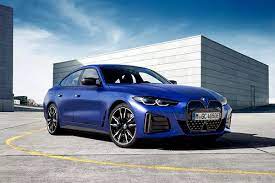
Technical Specifications :
BMW i4 will be offered in two models to the world car market. The eDrive40 model has an electric motor in the rear axle and has a power of 335 horsepower and reaches a speed of 100 km/h in 5.7 seconds.
The more powerful model is known as the BMW i4 M50, and in addition to the electric motor for the rear wheels, it also has an electric drive on the front differential and transmits a total of 536 horsepower to all four wheels. The electric car has more power than the petrol M4 and does 0-100 in 3.9 seconds, making it 0.1 seconds faster than its rear-wheel-drive petrol counterpart and just 0.3 seconds slower than the M4 xDrive.
According to BMW’s claim, the 83.9 kWh battery of the electric car can be charged to 80% in 31 minutes using a fast charger, and if an 11 kW home charger is used, the charging time will reach 8 hours.
The engine of electric cars does not produce any sound, and that is why BMW, in collaboration with Oscar-winning composer Hans Zimmer, designed the IconicSounds Electric system for its cars to convey excitement to the driver through the artificial sound of the engine in sport mode. This sound is played through the speakers and can be disabled if the driver and passengers need silence.
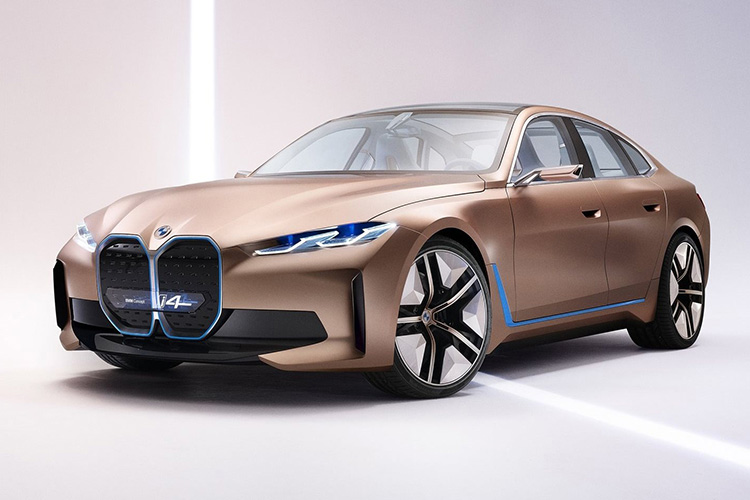
General specifications :
Engine type
An electric motor
Two electric motors
Battery capacity
83.9 kWh
the power
335 horsepower
536 horsepower
torque
430 N.m
795 N.m
gearbox
automatic
drive shaft
Rear differential
Two differentials
acceleration
5.7 seconds
3.9 seconds
Speed
190 km/h
225 km/h
win
475 km
450 km
Emission standard
Euro 6
Command
electric
body
Liftback sedan
Rim type
Aluminium
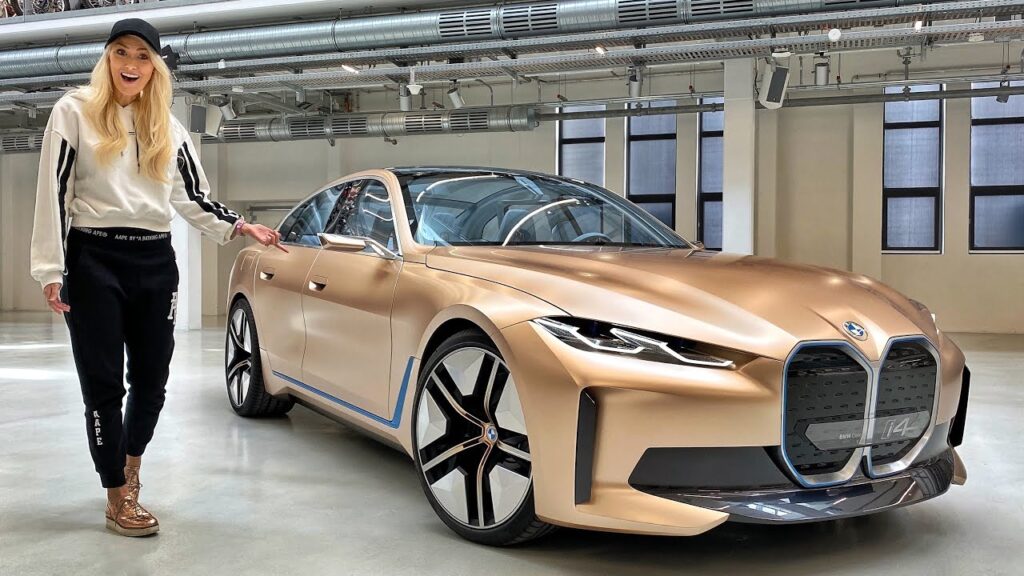
Advantages and disadvantages of BMW i 4 :
Advantages:
- Performance: The i4 boasts impressive acceleration and handling, typical of BMW’s commitment to driving dynamics. Its electric drivetrain delivers instant torque, offering a thrilling driving experience.
- Range: With a substantial range on a single charge, the i4 offers practicality for daily commutes and longer journeys. Its battery technology provides a competitive range compared to other electric vehicles in its class.
- Luxurious Interior: True to BMW’s reputation, the i4 features a high-quality, comfortable interior with premium materials and cutting-edge technology. The cabin is designed for both comfort and functionality.
- Charging Speed: It supports fast-charging capabilities, allowing for quicker recharges at compatible charging stations, reducing downtime during long trips.
- Sustainable Mobility: As an electric vehicle, the i4 contributes to reducing emissions and promotes sustainable transportation, aligning with the shift towards cleaner energy sources.
Disadvantages:
- Price: Electric vehicles often come with a higher price tag compared to their traditional counterparts. The i4’s initial cost might be a limiting factor for some buyers, although it can be offset by lower operating costs over time.
- Charging Infrastructure: While improving, the charging infrastructure for electric vehicles might still be limited in certain areas, potentially causing inconvenience for longer trips or in regions with fewer charging stations.
- Weight: Due to the batteries required for electric power, the i4 might be heavier than its internal combustion engine counterparts, which could slightly impact handling and agility.
- Potential Range Variability: Factors like temperature, driving style, and use of ancillary systems (heating/cooling) can affect the actual range of the i4, leading to variations in real-world performance compared to advertised figures.
Challenges facing BMW i 4 :
The BMW i4, like any electric vehicle, faces several challenges:
Charging Infrastructure: While the charging network for electric vehicles is expanding, there can still be limitations, especially in certain regions or less populated areas. Ensuring a robust and widespread charging infrastructure is crucial for the widespread adoption of electric vehicles like the i4.
Range Anxiety: Despite advancements in battery technology, range anxiety—the fear of running out of charge—remains a concern for some potential buyers. Educating consumers about the actual range, charging options, and advancements in battery technology can help alleviate these concerns.
Cost of Ownership: Electric vehicles, including the i4, often have a higher upfront cost compared to traditional internal combustion engine vehicles. While they can be cheaper to operate in the long term due to lower fuel and maintenance costs, the initial price can be a deterrent for some buyers.
Technological Advancements: As with any cutting-edge technology, there’s a continuous push for advancements. BMW and other manufacturers are constantly striving to improve battery technology, charging times, and overall performance, which could potentially make current models seem less advanced in the future.
Consumer Perception: Convincing consumers about the viability and advantages of electric vehicles over traditional gasoline cars remains a challenge. Some may still have concerns about factors like range, charging times, and the overall driving experience, despite the advancements made by vehicles like the i4.
Regulatory Changes: Shifting regulations and government policies related to emissions, incentives, and infrastructure development can significantly impact the electric vehicle market. Changes in incentives or regulations could affect the demand and affordability of the i4 and other electric vehicles.
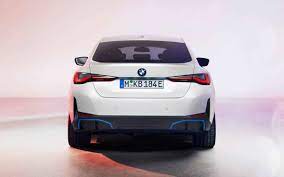
Appearance design:
The exterior design of the BMW i4, unlike the i3, is not different because it is built on the same platform and structure as the gasoline 4 Series Gran Coupe. Gran coupe is a four-door coupe car whose trunk is designed as a liftback.
The difference between the two BMW i4 eDrive40 electric models and the gasoline 4 Series is in the blue frame around the grille, logo and air intakes, and it can also be seen on the rear bumper. Although electric cars do not need a mesh grille to cool the engine, BMW’s special grille is also seen in this electric car, with the difference that instead of a mesh screen, a solid panel is seen.
Of course, the electric M50 model has a sportier look than the weaker eDrive40 model, with larger decorative intakes around the front bumper and behind the front tires, blue brake calipers and a spoiler on the trunk, and an M badge.
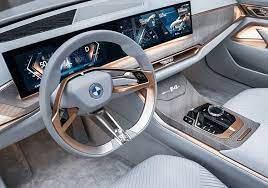
interior design :
The interior design of the BMW i4 is a blend of sophistication, technology, and sustainability. It’s crafted to offer a luxurious and futuristic experience for both the driver and passengers. Here are some key features:
Sustainable Materials: BMW emphasizes sustainability in the i4’s interior. Expect to see eco-friendly materials like recycled plastics, natural fibers, and responsibly sourced wood or leather substitutes.
Digital Cockpit: The i4 boasts a high-tech cockpit with digital displays and intuitive controls. A large central infotainment screen and a digital instrument cluster provide a seamless interface for controlling various functions, including navigation, entertainment, and vehicle settings.
Comfort and Space: BMW focuses on providing ample space and comfort for occupants. The seating is designed ergonomically, offering support and adjustability for long journeys. The layout maximizes legroom and headroom for both front and rear passengers.
Premium Finishes: Expect premium finishes and high-quality materials throughout the cabin. Soft-touch surfaces, ambient lighting, and meticulously crafted details contribute to the overall luxurious feel.
Advanced Connectivity: The i4 integrates advanced connectivity features, including smartphone integration, voice commands, and possibly BMW’s intelligent personal assistant. These features enhance the driving experience and keep occupants connected on the go.
Sound System: BMW often offers high-quality sound systems in their vehicles, and the i4 likely continues this trend. Expect an immersive audio experience for entertainment and communication.
Customization Options: BMW typically provides various customization options, allowing buyers to personalize their i4’s interior with different trim materials, color schemes, and additional features to suit their preferences.
Serious competitors of BMW i 4 :
The BMW i4 faces competition from several other electric vehicles that are vying for attention in the luxury electric car segment. Some of its serious competitors include:
- Tesla Model 3 and Model S: The Model 3 is known for its range, performance, and tech-forward approach at a relatively competitive price point. The Model S, while more expensive, offers high performance, longer range, and a luxurious interior, competing in a similar market segment as the i4.
- Audi e-tron GT: Audi’s entry into the electric sedan market offers a blend of performance, luxury, and Audi’s signature design. It presents a strong challenge to the i4 with its stylish aesthetics and advanced technology.
- Mercedes-Benz EQE and EQS: Mercedes-Benz’s electric offerings, particularly the EQE and EQS, rival the i4 in terms of luxury, technology, and comfort. These models emphasize a plush interior, advanced features, and the prestige associated with the Mercedes-Benz brand.
- Porsche Taycan: Known for its performance, the Taycan competes with the BMW i4 in the luxury electric sedan market. It offers exceptional driving dynamics, high-end materials, and a sporty design.
- Lucid Air: Lucid Motors’ Air sedan targets the luxury electric vehicle market with a focus on range, performance, and a spacious, premium interior. It aims to challenge established brands with its innovative approach to electric vehicles.
- Jaguar I-PACE: While an SUV rather than a sedan, the Jaguar I-PACE competes in the luxury electric vehicle space, offering a unique design, good performance, and a luxurious cabin.
Conclusion :
The BMW i4 represents a bold step towards the future of electric mobility, blending BMW’s signature driving dynamics, luxurious comfort, and innovative technology into a sleek and sustainable package. With its emphasis on performance, a competitive range, and a commitment to sustainability through the use of eco-friendly materials, the i4 stands as a testament to BMW’s dedication to evolving the driving experience.
Challenges such as charging infrastructure, consumer perceptions, and market competition are present, yet the i4’s luxurious interior, advanced connectivity, and driving prowess position it as a strong contender in the luxury electric vehicle segment. As the automotive industry continues its shift towards electrification, the i4 signifies BMW’s commitment to offering a compelling electric vehicle that doesn’t compromise on the brand’s legacy of driving pleasure and craftsmanship. With ongoing advancements and a focus on sustainable innovation, the i4 encapsulates BMW’s vision of an electric future while delivering a thrilling and luxurious driving experience.
For more information, visit the official BMW i4 website
Read this article : Ford mustang mach e
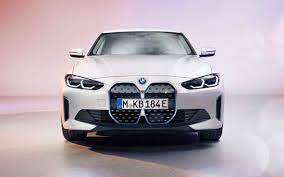
Leave a Reply